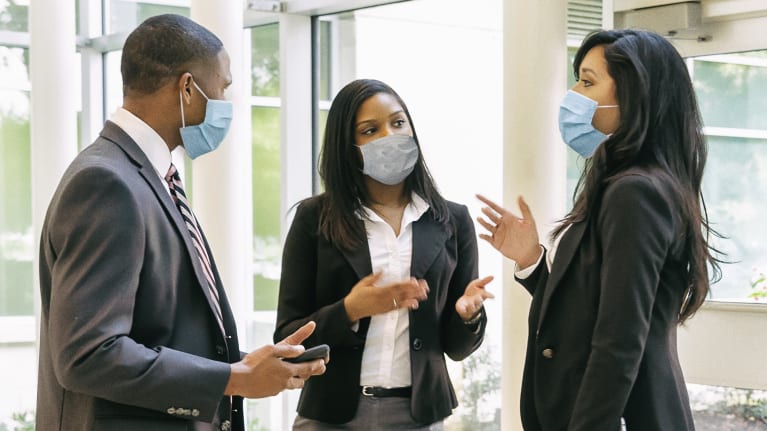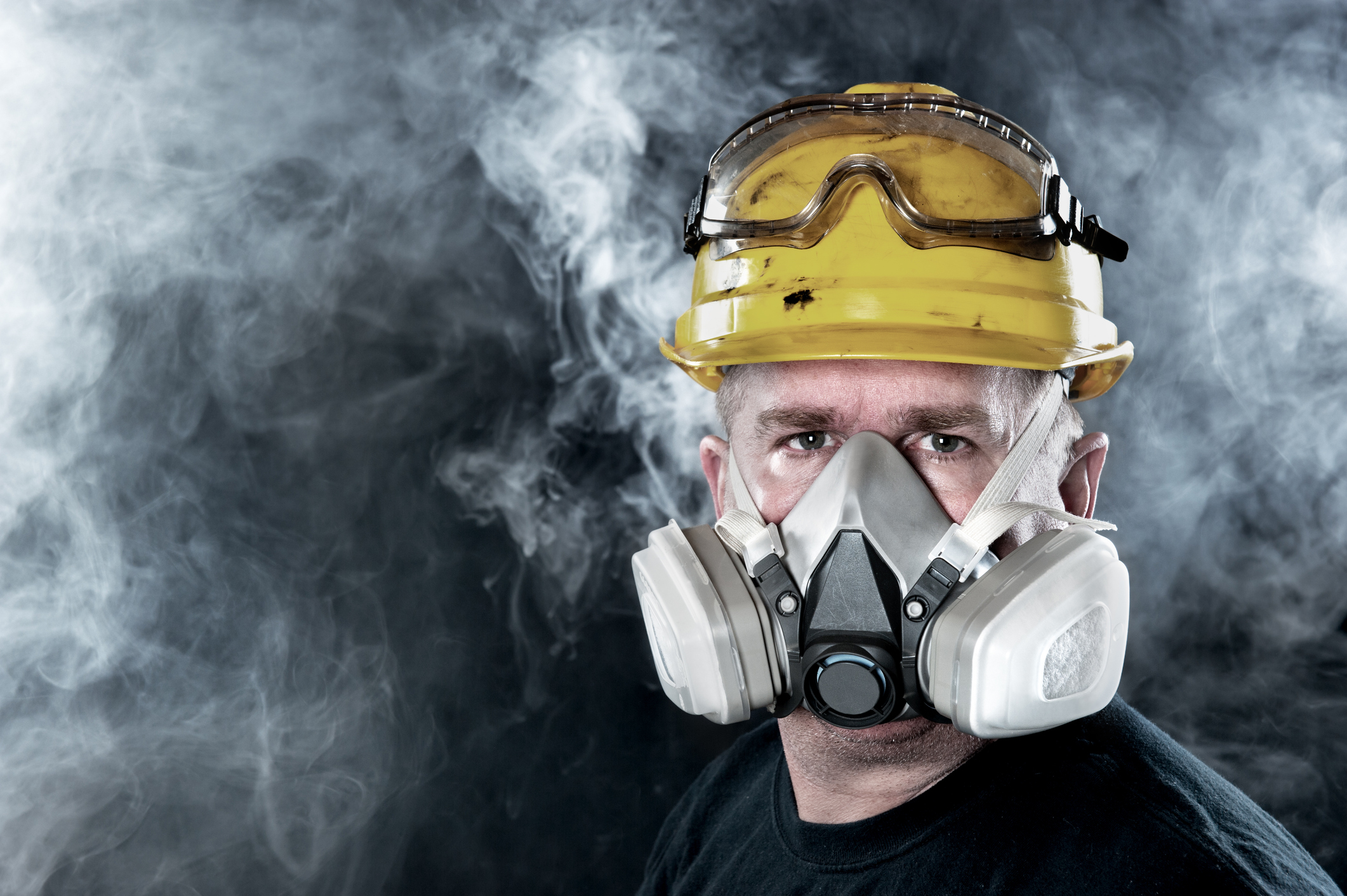Managing the Risk of COVID-19 Related Lawsuits Against Employers

Written By: Michael C. Lord, Attorney for Williams Mullen (a NASP Strategic Alliance Partner)
The COVID-19 pandemic is an economic boon for law firms that prosecute class actions on behalf of their client-victims. Businesses face legal exposure under various theories from people contracting the virus that they claim was linked either to the workplace or to the service provided. Potential plaintiffs include current employees and members of their households, as well as persons outside the employment relationship like customers, vendors, first responders, and government bodies. One source has tracked over 340 complaints filed around the United States that allege some sort of breach of employment law.
The failure to exercise reasonable care in managing COVID-19 at the workplace lies at the core of most of this litigation. One obstacle for the plaintiffs is defining the standard of care against which to hold businesses responsible. Currently, there is no federal OSHA standard on COVID-19 in the workplace, and, absent Congressional action, it is not likely that OSHA will promulgate a standard. Plaintiffs are left with the guidance jointly issued by OSHA and the CDC, as well as guidance in executive orders issued by state and local governments. As more states and localities begin to open up commercial activities, federal agencies, and state and local governments are encouraging and, in some places, requiring employers to develop and implement a comprehensive screening and monitoring strategy for employees aimed at preventing the introduction of COVID-19 into the workplace.
 Temperature and Other Medical Screening of COVID-19 Symptoms
Temperature and Other Medical Screening of COVID-19 Symptoms
Of course, the first step in the prevention of COVID-19 in the workplace lies with the employee. Employees should be required to self-screen, and, if they feel ill and display any of the COVID-19 symptoms, they must stay home. But, in addition to these self-screens taken by employees before even attempting to report to the workplace, many executive orders recommend that employers check worker temperatures and conduct symptom screens before entry into the workplace.
The Equal Employment Opportunity Commission (EEOC) has stated in recent guidance7 that, although it constitutes a medical inquiry under the Americans with Disabilities Act, employers are permitted to test and screen workers in order to determine possible exposure to COVID-19, provided the employers do so in accordance with applicable guidance from the government. Per guidance jointly posted by the CDC and OSHA, employers who choose to screen workers for COVID-19 symptoms and possible exposure before starting their workday should:
- Develop the program in consultation with state and local health officials and occupational medicine professionals.
- Apply the program to all employees. (Do not select only older employees or employees with known medical conditions for screening, for example, to minimize potential claims of discrimination.)
- Screen before entry into the workplace. (Be careful to manage the process to avoid unintended wait time that may be compensable time pursuant to the Portal to Portal amendments to the Fair Labor Standards Act.)
- Provide verbal screening in appropriate language(s) that the worker will understand to determine whether workers have had COVID-19 symptoms in the past 24 hours.
- Check temperatures of workers at the start of each shift to identify anyone with a fever of 100.4°F or greater (or reported feelings of feverishness).
- Ensure that screeners are trained to use temperature monitors and that monitors are accurate under conditions of use (such as cold temperatures).
- Evaluate the burdens and benefits of recording workers’ temperatures or asking them to complete written questionnaires. These records must be retained for the duration of the workers’ employment plus 30 years. See 29 CFR § 1910.1020. In addition, both the Americans with Disabilities Act and the Family Medical Leave Act require that the records be treated confidentially and maintained separately from personnel files.
- Ask whether the employee has been directly exposed to someone diagnosed with COVID-19.
- Determine whether the employee has traveled to any known CDC hotspots since the last screening or within the last two weeks.
Of course, employees should not enter the workplace if they have a fever of 100.4°F or higher (or report feelings of feverishness), or if screening results indicate that the worker is suspected of having COVID-19 based on symptoms, or if the employee says direct exposure to another person who has been diagnosed with COVID-19. Instead, employers should encourage self-isolation under the management of a healthcare provider. Return to work should be consistent with current CDC recommendations.
The CDC/OSHA guidance also urges employers not to overlook the safety and health of the screeners. To protect them from exposure to potentially infectious workers entering the facility, employers should:
- Implement engineering controls, such as physical barriers or dividers or rope and stanchion systems, to maintain at least 6 feet of distance between screeners and workers being screened.
- If screeners need to be within 6 feet of workers, provide them with appropriate PPE based on the repeated close contact that the screeners have with other workers.
- Such PPE may include gloves, a gown, a face shield, and, at a minimum, a face mask.
- N95 filtering facepiece respirators (or more protective equipment) may be appropriate for workers performing screening duties and necessary for workers managing a sick employee in the work environment if that employee has signs or symptoms of COVID-19. If respirators are needed, they must be used in the context of a comprehensive respiratory protection program that includes medical exams, fit testing, and training per 29 CFR § 1910.134.
Face Coverings at Work
The latest FAQs from OSHA recommend that employers encourage workers to wear face coverings at work. Face coverings are intended to prevent asymptomatic or presymptomatic wearers from spreading potentially infectious respiratory droplets to others. As a source control, face coverings are not considered by OSHA to be PPE and cannot be used in place of respirators when respirators are otherwise required.
Conclusion
While many states have enacted immunity laws to protect businesses against COVID-19 liability, prudent employers should familiarize themselves with appliable guidance published at the federal level by OSHA and CDC and guidance issued by applicable state and local governments. Compliance with the guidance best positions employers against the risk of COVID-related liability. For the full text, including citations referencing pending court cases, click here.
Michael C. Lord, an attorney with Williams Mullen. Mike has over three decades of experience in providing occupational health and safety counsel and citation defense. By handling hundreds of these matters, he has practical experience with the General Duty Clause and virtually every OSHA standard. Williams Mullen is a regional, full-service law firm with approximately 240 attorneys in offices across North Carolina, South Carolina, Virginia and Washington D.C. The goal of Williams Mullen is to provide solutions to help clients’ businesses thrive.
Blog Posts
Latest Posts
Related Posts


 Temperature and Other Medical Screening of COVID-19 Symptoms
Temperature and Other Medical Screening of COVID-19 Symptoms

